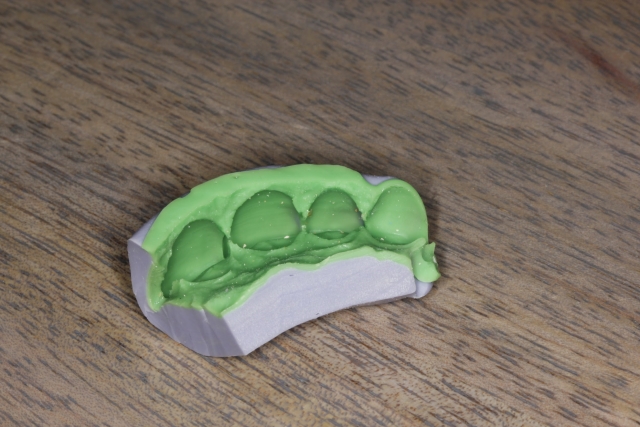Power of the Intraoral Mock-Up: 7 Steps to Case Acceptance
By Courtney Lavigne on July 5, 2016 | 1 commentIt’s difficult for a patient to envision what the changes they desire will look like in their own mouth. What better way than to show them before anything irreversible is completed?
The mock-up provides a number of invaluable benefits, two of the most important being patient education and managing patient expectations. The worst time to show the patient your vision for their smile is at the delivery appointment ... that’s a recipe for disaster!
When I have a patient interested in changes in the esthetic zone, there’s a lot of discussion at the front end of treatment, long before I’ve got a bur in hand. That discussion leads to the lab-fabricated wax-up. Using that wax-up is essential in evaluating function, speech and esthetics down the road during temporization. It’s also essential in getting from here:


to here:


and finally, here:


But how do you use an intraoral mock-up in the stages in between?
1. When I get a custom wax-up back from the lab, I fabricate a PVS putty matrix that can be used to translate the wax-up intraorally.

2. I first mix the putty together (I use Flexitime Easy Putty) and lay it over the wax-up until it’s set. I then use a light body (Flexitime Correct Flow), inject it into the hardened putty matrix, and re-insert it over the wax-up. Allow extra time for setting since you don’t have the heat of the patient's mouth working for you.

3. I then use Bisacryl (Luxatemp specifically), fill the wells for the teeth that have had addition wax-ups completed to just under the margin of the tooth (this wastes less material; you don’t need to overfill it since the teeth will take up space), and insert the matrix.
4. I carefully remove the matrix by stretching it facially and away from the tooth after one minute of setting time. This allows for enough time to begin hardening, but the Bisacryl isn’t fully set yet. I do this because if there are any air bubbles along the incisal edges, you can apply a small additional amount of Bisacryl in the wells of those teeth in the matrix and re-insert it. I then allow for another minute and a half of setting.
5. When you remove the matrix, you’ll have some flash extending over the margins of the teeth. Remove the amount that serves as a distraction to the patient.


6. It doesn’t hurt to snap a photo of the patient seeing him or herself for the first time either, because it isn’t uncommon to see excitement like this:


When a patient can visualize the change and see and feel it for him or herself, they often can’t get into your schedule fast enough. I also find patients reluctant to let you remove it; they’re too in love with their new smile!
7. When it’s time to remove the mock-up, I take half off and leave half in place. I do this in order to snap an additional photo:

This photo shows the patient where they’re coming from and where they’re headed. You can really visualize the incisal edge wear when you see this stark contrast.
While I always complete a wax-up for accepted cases, I often offer to complete one for patients who are on the fence. It’s a relatively small investment on the patient’s end to answer some questions that may be holding them back.
Your material costs for the wax-up are the impressions, the lab fee, the matrix, the Bisacryl and doctor time. Choose what that is worth to you, and have a set fee for a trial appointment. It often leads to case acceptance and, perhaps more importantly, it manages patient expectations and gives you the peace of mind that you and your patient are on the same page.
Stay tuned for a future article on using that wax-up and matrix to get your temps just right, and translating that information to your ceramist!
(Click this link to read more dentistry articles by Dr. Courtney Lavigne.)
Courtney Lavigne, DMD, Contributing Author - http://www.courtneylavigne.com
Comments
September 4th, 2016